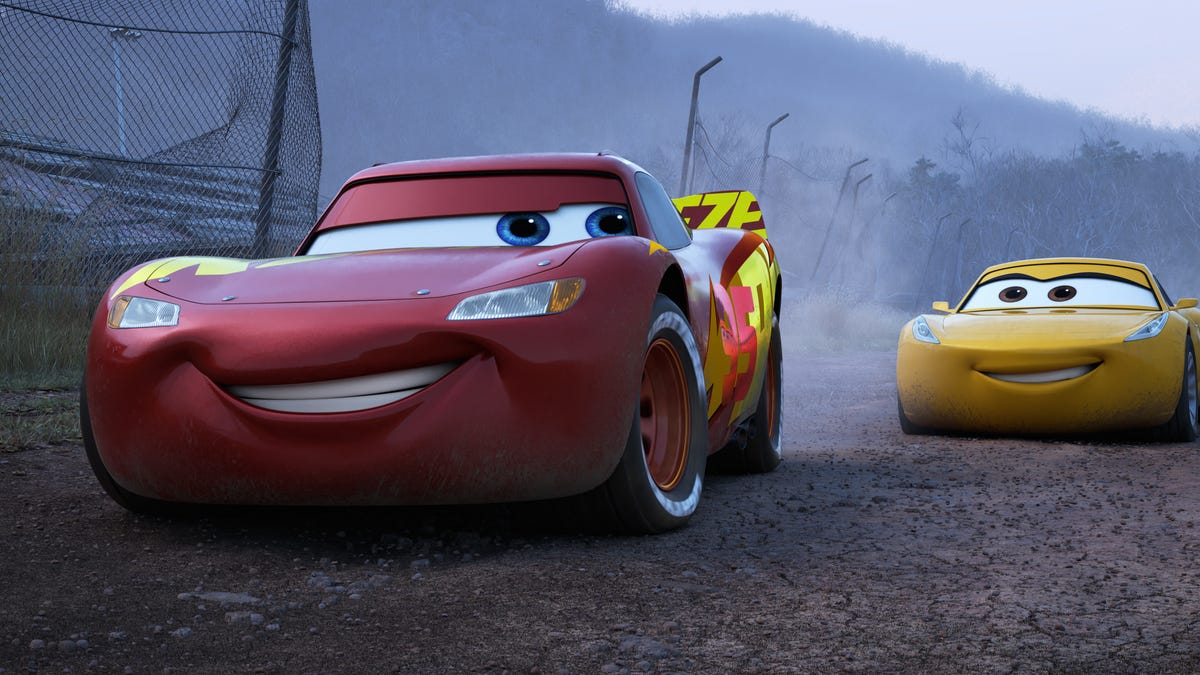Behind the tech that built Pixar's 'Cars 3'
CNET gets an early peek at the upcoming animated film and talks to the teams that make the magic happen.

Ladies and Gentlemen, start your engines! It's about to get muddy.
"Cars 3" is the latest installment to Pixar's four-wheel franchise. In case you're not keeping track, Cars movies have earned over $1 billion in box office revenue worldwide and over $10 billion in merchandise. Yeah, that's a lot of zeros.
Lightning McQueen goes head-to-head with newcomer Jackson Storm
This time around Lightning McQueen (Owen Wilson) isn't the top dog anymore, having lost to upstart Jackson Storm (Armie Hammer) and suffering a brutal crash in the process.
I attended the film's press event in April and talked to members of the effects and character design teams about the technical achievements and challenges they faced building the racing flick.
Down and Dirty
Every new movie typically has a new technical challenge, and in "Cars 3" it's mud. Pixar described it as "chunky oatmeal in soup," and it takes center stage in one of the film's most memorable scenes.
"It's not really a liquid, it's not really a solid," said Effects Supervisor Jon Reisch, "its kinda somewhere in between, and that in between state is something that's really hard to capture on the computer and simulate correctly."
Pixar uses a 3D-animation application called Houdini as the backbone for all of their simulations for effects.
Hey good lookin'
"Finding Dory" was Pixar's first feature film to use RenderMan RIS, a game changer in how well 3D images can be rendered. "Cars 3" is using the latest version of Renderman RIS, which has evolved even more for this movie.
The Cars universe is very shiny and reflective, and Pixar needed the power of RenderMan's path-tracing capabilities, which help produce effects like motion blur and depth of field, to help create photo-realistic results.
Pixar wanted the vegetation to be even more lush than the greenery in "The Good Dinosaur," and the team said RenderMan's tools helped bring millions of blades of grass to screen at the highest fidelity.
Oh how things have changed
I asked the team how the advancements in computing power have changed what they can do now, compared to the first "Cars" in 2006.
Supervising Animator Bobby Podesta says animators can now use what he called "hardware shading" to see textures on the vehicles in their software as they're animating. In the past, they had to wait for a render to be completed and processed before they animated it or made changes.
That was a huge jump. The team would come up with cheats for the first "Cars," like just drawing a gray stripe on the tire so they had a rough idea of what it looked and behaved like, but it wasn't anything close to what they have now.
Reisch recalled that on "Cars" they could only show off simulations done on their own specific desktop work station. Now, the simulating is done in render farm systems instead of being dedicated to a single persons computer.
Supervising Technical Director Michael Fong says the render farms are significantly bigger than those of the past, but because of the complexity of the 3D animation we see in today's films the render times are actually a lot longer, not shorter.
"Car 3" hits cinemas in the US on June 16.

